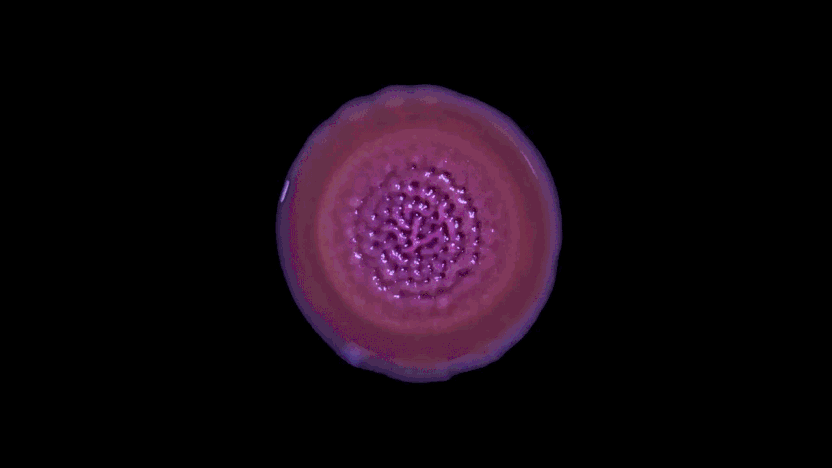

Those biophysical forces are like universal zoning rules for the biofilm cities: they govern how the inhabitants obtain food and building materials, how they can move and how they interact with one another. Just as urban planners use their knowledge of civil engineering principles and regulations to build better cities for people, microbiologists and bioengineers can use these rules to make objects more or less hospitable to the billions of cells that live in and around us. — Quanta Magazine
Biofilms are, essentially, omnipresent clusters of bacteria that foul everything from sewer lines to our teeth—99.9 percent of the simple cells called prokaryotes default to living in those close quarters among millions of their compatriots. Extracelluar matrix, a sticky combination of proteins and sugars, effectively glues billions of bacteria to a surface of choice, giving biofilms their shapes and protecting the cells living at the center.
The size of the biofilm and the interaction of cells within it give the different cells the opportunity to specialize in a particular task, such as acquiring food, subverting predators or acting as a reservoir of genetic material from which to regrow the entire structure.
“We can watch these complex communities in what is essentially their natural habitat and study their structure or metabolism. There’s a lot we can learn when we can study biofilms in their whole freaky native state,” said Melissa Garren, a marine biologist at California State University, Monterey Bay.
No Comments
Block this user
Are you sure you want to block this user and hide all related comments throughout the site?
Archinect
This is your first comment on Archinect. Your comment will be visible once approved.